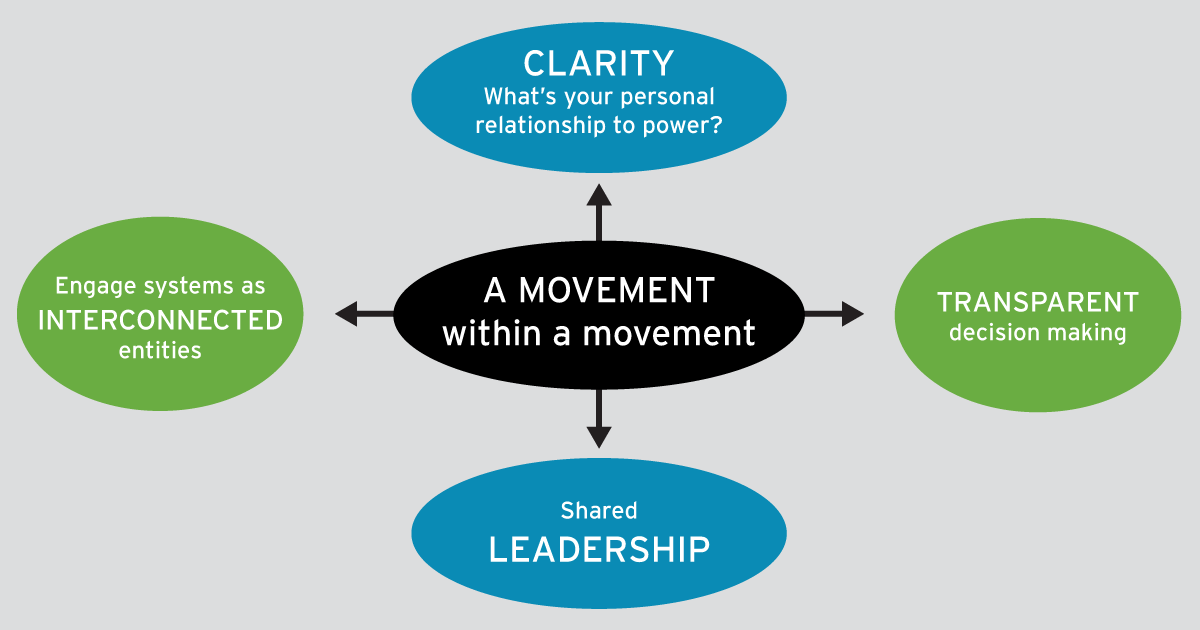
To root out gender-based violence, we need a movement against racism, biases, homophobia, transphobia and oppressive practices within our field.

Coming into the anti-violence field I was taught that sexual and domestic violence know no class, race, or education level. Yes, that’s true. But the systems and services set up for survivors do know class and race. Within the context of the #MeToo movement, we have learned that we won’t end gender-based violence or violence against women if we continue to ignore racism and oppressive practices. To root out gender-based violence, we need A MOVEMENT WITHIN A MOVEMENT. We need a movement against racism, biases, homophobia, transphobia and oppressive practices within our field.
Anti-violence advocates know that sexual and domestic violence do not occur in silos, but how often do we bring other systems besides the criminal justice system to our conversations? How often do we think about the systems that often keep those in the margins further marginalized? When do we use our power and privilege to give access to those who wouldn’t have it otherwise? What are the opportunities to interrupt a pattern or create something new?
One place to start is to ask ourselves what brought us to the field and what keeps us committed. How did we come into this work? And how do we show up to this work? We need to explore how our stories intersect and how they are reflected in our approach to the anti-violence movement.
We need A MOVEMENT WITHIN A MOVEMENT. How? We need to recognize that sexual and domestic violence are deeply rooted in racial violence. While different in many key ways, both forms of violence are deeply rooted in systemic oppression and disregard for lives deemed “less valuable.”
Unfortunately, our movement has failed to address these realities. Somewhere in the process we “lost” our movement which made us lose credibility and legitimacy particularly in communities of color.
How do we get it back? There isn’t a 1,2,3…steps but we can begin by being clear about our personal relationship to power. We need to be transparent about our decision making and how this is connected to power. We need to share leadership. One of the responses I have heard from white folks when I talk about this is… “I am white, I care about these issues too, I am a survivor too, I am a feminist too…do you think I should leave my job to give room to other folks in the margins?” and the answer is YES!!! – no, I am just kidding. Most People of Color (POC), people with disabilities, Trans and Queer folks aren’t asking you to leave your job.
We are asking for you to become aware and to interrupt the systems that created the barriers for us seeking a social network and social connections that many of you have enjoyed because of the privileges you were granted. We ask for you to think about how it will look for these communities to thrive in the same social settings that you do. We ask for you to think about giving a fair shot to those who wouldn’t have it otherwise.
Here is another way to look at this:
We must do our own internal work to fully fight these systems that often keep those in the margins further marginalized. We need to take every opportunity we can to interrupt patterns of systemic oppression and create something new.
Here is another way to look at the ways in which we can center folks at the margins:
Ignoring where we came from, what brought us to the movement, and ignoring racist and oppressive practices within our movement won’t end gender-based violence and/or violence against women. We are going to need A MOVEMENT WITHIN A MOVEMENT that is truly survivor informed and led.
This is the second post in our Putting it into Practice: Diversity and Inclusion in Prevention blog series. The goal of this series is to highlight the work that folks are doing in to prioritize diversity and inclusivity in their prevention efforts.
